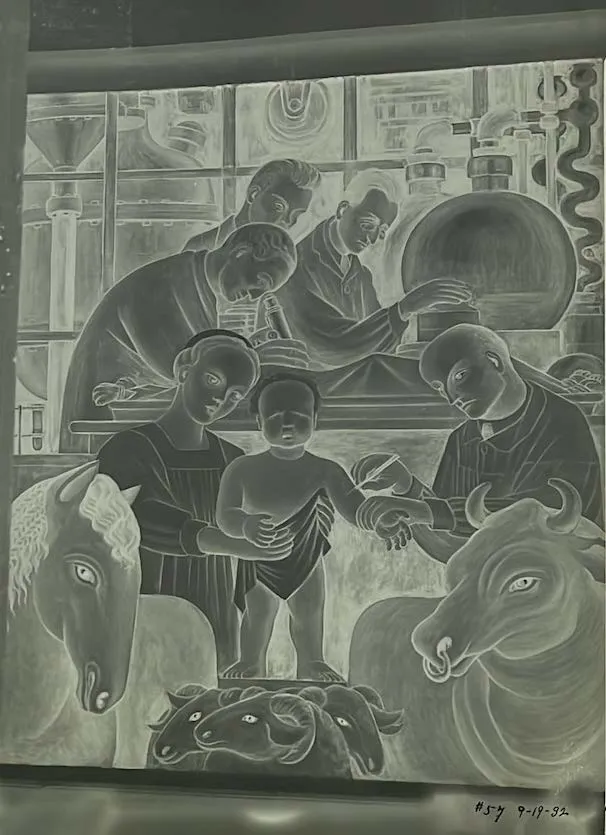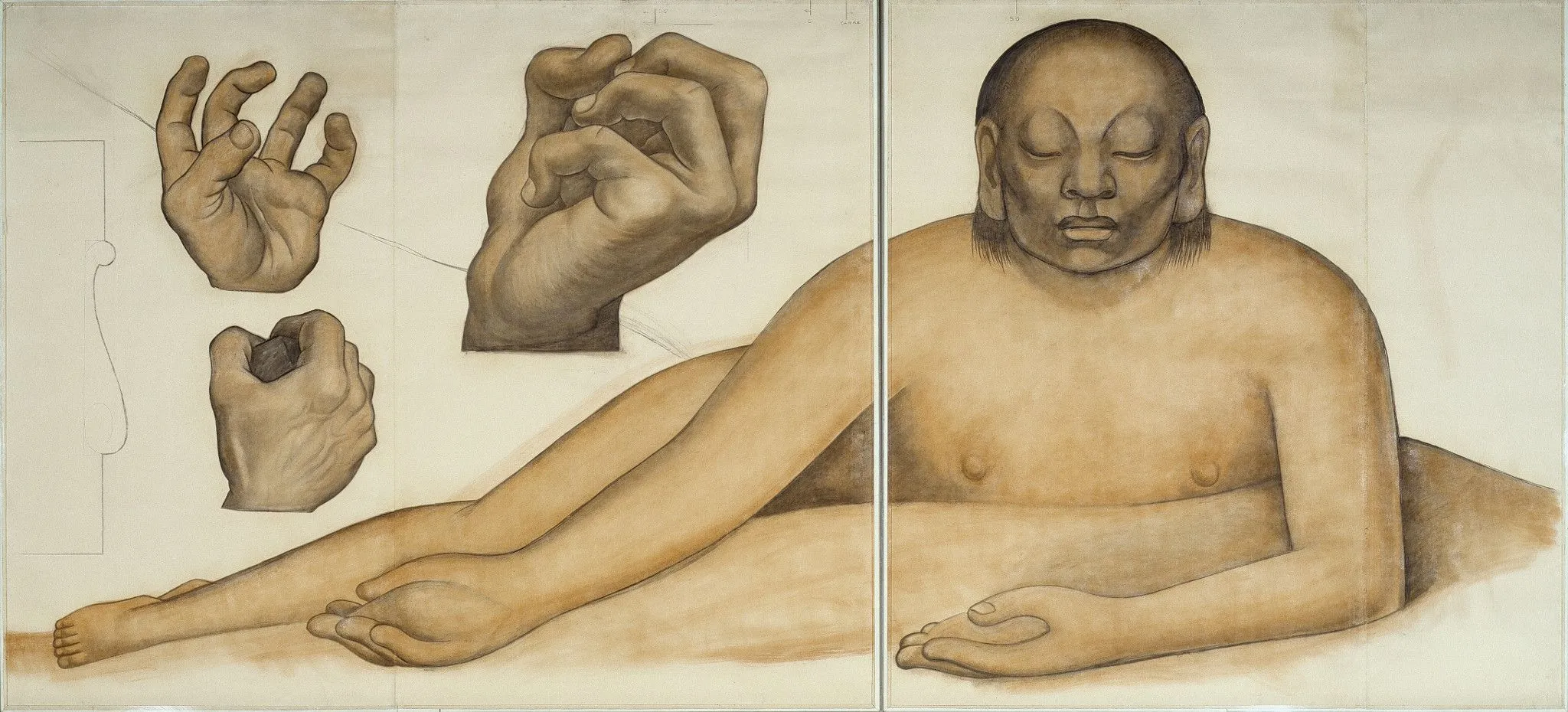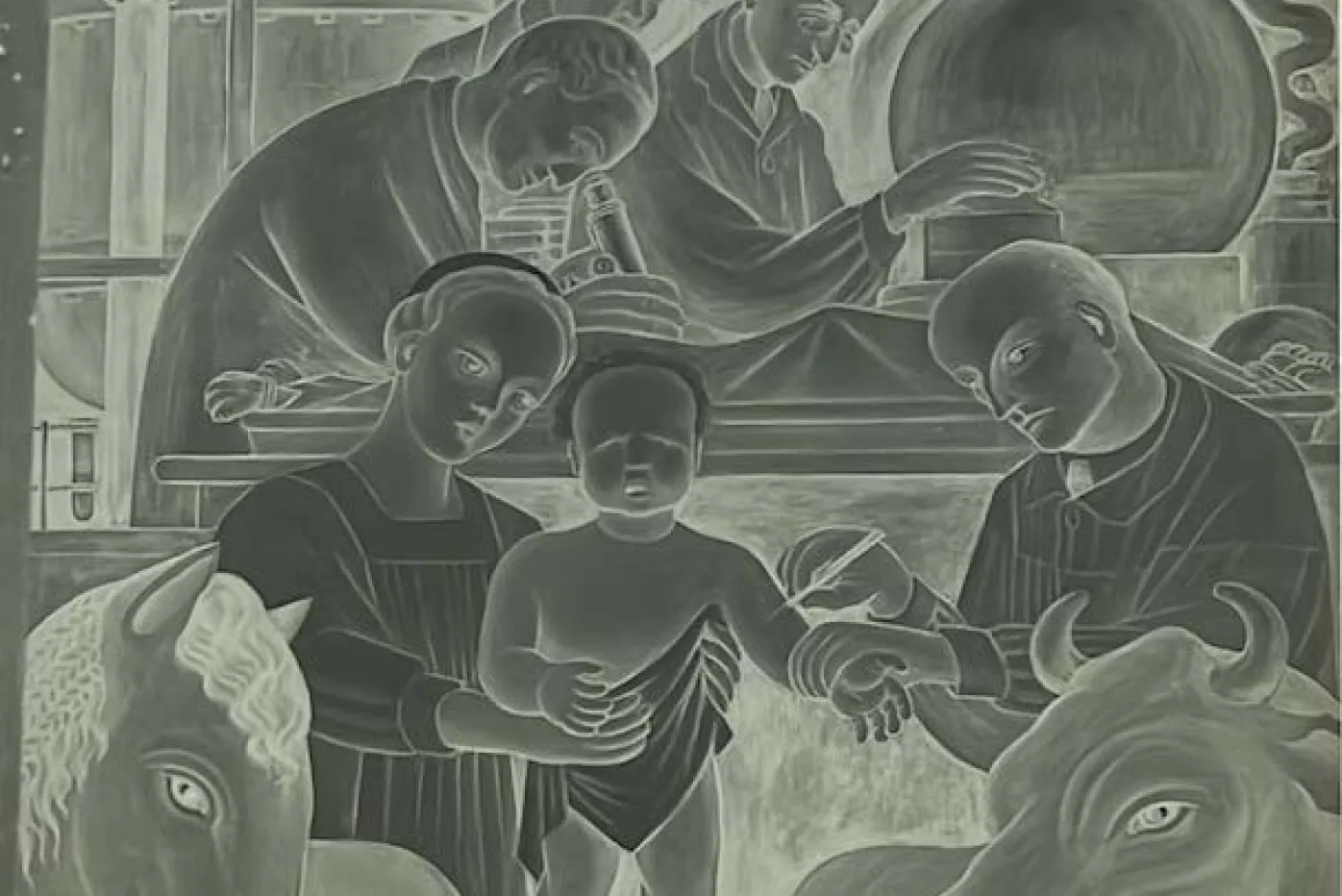One of my favorite places at the Detroit Institute of Arts is the museum’s Research Library, Archives, and Collection Information department. Open to the public, it is a place to visit and learn about the museum’s past and present, researching historical documentation and accessing its thousands of beautifully illustrated art books. During a recent visit to this department, I was brought up to date on an ongoing project that includes the digitization of a collection of existing 8 x 10-inch (large format) nitrate photo negatives, which were taken in 1932–33 to document the making of Diego Rivera’s Detroit Industry Murals at the DIA. Nitrate negatives decay with time and pose some difficult preservation challenges. Their digitization will help preserve the history of the murals and make the images accessible to everyone through our website.*

Rivera murals (South Wall), September 26, 1932, #52/2800, Photographic Negatives Collection, Detroit Institute of Arts, Research Library & Archives

Rivera murals (Vaccination Panel), September 19, 1932, #57/2085, Photographic Negatives Collection, Detroit Institute of Arts, Research Library & Archives
The DIA team and I talked about the project and marveled at the extraordinary efforts that were taken to document Rivera’s work during 1932 and 1933. It appears that Edsel Ford had asked Ford Motor Company photographer W. J. Stettle to take photos of Rivera’s mural progress daily. In addition, Ford Motor Company’s team filmed the artist at work, and today that film footage is accessible on the National Archives website. Filming and photographing Rivera’s work with the latest technologies of the time was a very expensive activity, but more importantly, it was an indication of the awareness that a masterpiece for posterity was in the making—today some refer to the Detroit Industry murals as the “Sistine Chapel of Detroit.”

Rivera painting Detroit Industry Murals, ca.1932, Photographic Collection, Detroit Institute of Arts, Research Library & Archives
The value and interest that Rivera and Frida Kahlo placed on these large images underscores this photographic campaign’s rarity and uniqueness. As a matter of fact, soon after leaving Detroit, they requested a copy of the set of mural photographs and, in exchange, allowed the museum to keep the large drawings that Rivera used to paint his magnificent frescoes. To this regard, on Oct. 21, 1933, Kahlo wrote the following letter from New York City to Clyde Burroughs, then-secretary of the DIA:
Dear Mr. Burroughs,
Diego Rivera received your letter asking that the drawings remain in Detroit. He is perfectly willing to have you keep them there provided you can send him copies of the large photographs of the frescoes, which were made by the Ford photographer.
We were very glad to hear from you. Greetings to all our mutual friends and to your family.
Sincerely,
Frida Kahlo de Rivera
While the set of photographs was a unique testament to the murals in 1933, the museum was very lucky to keep these phenomenal drawings, which are one the great treasures of the collection. They were on view at the DIA in 1933, then packed and stored. Because of the size of our building and its different periods of renovation, we sort of lost track of them for many years. It was only around 1979 when two DIA archivists, Marilyn Ghausi and Claudia Hommel, rediscovered the Rivera drawings in a storage area rolled up in brown paper where, fortunately, they had remained seemingly untouched for almost 45 years.

Diego M. Rivera, Figure Representing the Yellow Race, 1932, charcoal and pigment on two joined sheets of off-white wove paper. Detroit Institute of Arts, Gift of the artist, 33.42.
The discovery by Ghausi and Hommel aligns well with the work that our current director of the Research Library, Archives, and Collection Information department, Maria Ketcham, and her team are doing today. They continue to find, preserve, and digitize our documentary treasures so we can share the institution’s history with present and future generations of scholars as well as the public. With the recent establishment of our brand-new Digital Division, we are providing new talent and resources to do this important work. I am always amazed and very grateful for the extraordinary effort that takes place behind the scenes at the DIA. We are lucky to have such a committed and passionate team as well as a world-class collection for the benefit of our communities.
*Special thanks to Jim Prest, a DIA volunteer who has been working diligently on the digitization of these negatives and photos.


